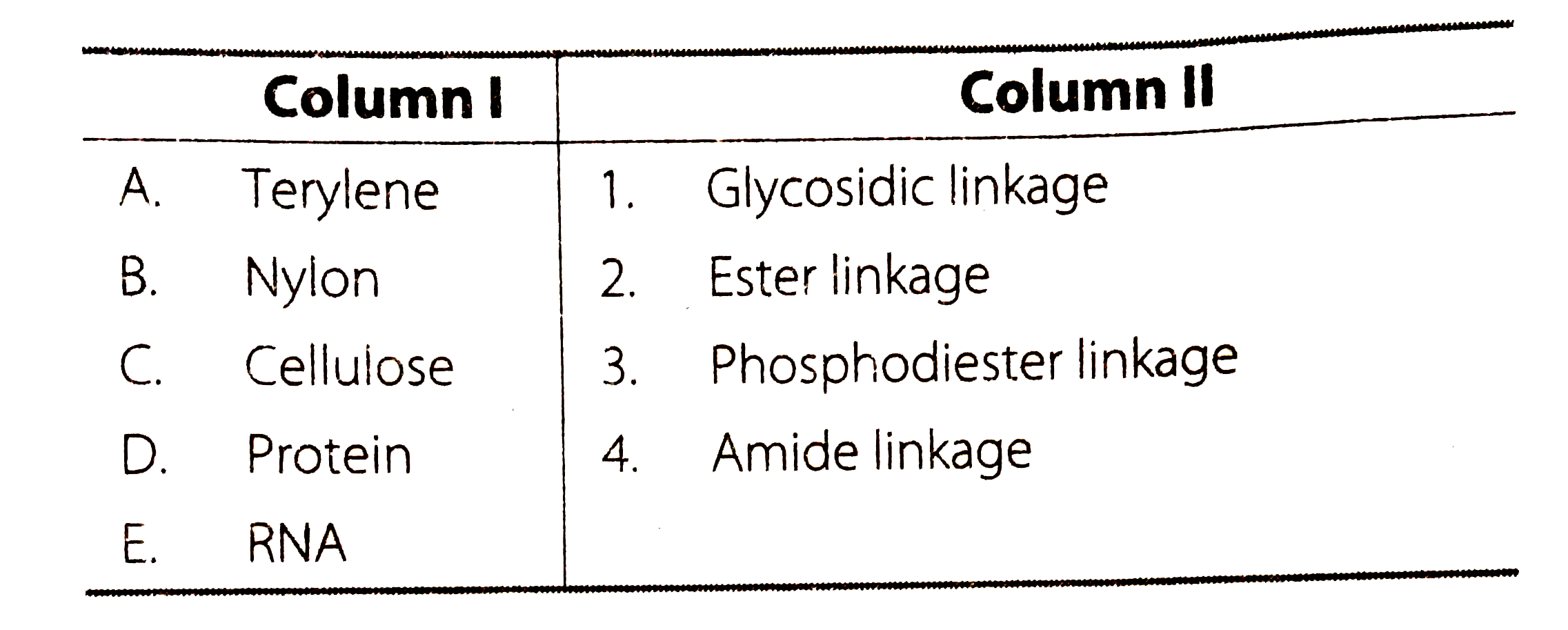The type of linkage present in the carbohydrates is
peptide
glycosidic
amide
phosphate bonds
The correct Answer is:B
Step-by-Step Solution:
1. Identify the Question: The question asks about the type of linkage present in carbohydrates.
2. Understand the Options: The options given are:
- Peptide
- Glycosidic
- Amide
- Phosphate
3. Analyze Each Option:
- Peptide Bonds: These are found in proteins and are formed between the carboxylic acid group of one amino acid and the amine group of another. Therefore, this option is incorrect for carbohydrates.
- Glycosidic Bonds: These bonds are specifically formed between monosaccharides (simple sugars) and involve the hydroxyl group of one sugar reacting with the hemiacetal or hemiketal group of another. This is the correct option for carbohydrates.
- Amide Bonds: These are essentially the same as peptide bonds and are also found in proteins. Therefore, this option is incorrect for carbohydrates.
- Phosphate Bonds: These are found in nucleic acids (DNA and RNA) and involve the linking of nucleotides. This option is also incorrect for carbohydrates.
4. Conclusion: The type of linkage present in carbohydrates is glycosidic bonds.
5. Final Answer: Glycosidic bonds are the linkages found in carbohydrates.
---
- Peptide
- Glycosidic
- Amide
- Phosphate
- Peptide Bonds: These are found in proteins and are formed between the carboxylic acid group of one amino acid and the amine group of another. Therefore, this option is incorrect for carbohydrates.
- Glycosidic Bonds: These bonds are specifically formed between monosaccharides (simple sugars) and involve the hydroxyl group of one sugar reacting with the hemiacetal or hemiketal group of another. This is the correct option for carbohydrates.
- Amide Bonds: These are essentially the same as peptide bonds and are also found in proteins. Therefore, this option is incorrect for carbohydrates.
- Phosphate Bonds: These are found in nucleic acids (DNA and RNA) and involve the linking of nucleotides. This option is also incorrect for carbohydrates.
Topper's Solved these Questions
- BIOMOLECULESBOOK - ICSECHAPTER - BIOMOLECULESEXERCISE - REVIEW QUESTIONS (FILL IN THE BLANKS)
20 Videos
- BIOMOLECULESBOOK - ICSECHAPTER - BIOMOLECULESEXERCISE - REVIEW QUESTIONS (ANALOGY TYPE QUESTIONS)
10 Videos
- BIOMOLECULESBOOK - ICSECHAPTER - BIOMOLECULESEXERCISE - NCERT EXERCISES WITH ANSWERS (DIFFERENTIATE BETWEEN)
25 Videos
- BIOLOGY ISC SAMPLE QUESTION PAPER 2019BOOK - ICSECHAPTER - BIOLOGY ISC SAMPLE QUESTION PAPER 2019EXERCISE - PART-II (SECTION -C)
6 Videos
- BODY FLUIDS AND CIRCULATIONBOOK - ICSECHAPTER - BODY FLUIDS AND CIRCULATIONEXERCISE - DIFFRENTIATE BETWEEN
13 Videos
Similar Questions
Knowledge Check
The type of muscle present in our
Aheart is involuntary and unstirated smoothBintestine is striated and involuntaryCthigh is striated and voluntaryDupper arm is smooth muscle and fusiform in
Match the polymers given in column I with the type of linkage present in them given in column II

View SolutionThe types of muscles present in our :
View SolutionType of muscle present in our
View Solution(a) What type of linkage is present in proteins ?
(b) Give one example each of water soluble and fat soluble vitamins.
(c ) Draw pyranose structure of glucose.
View SolutionWhat type of lining is present in trachea ?
View SolutionExplain various types of cartilages present in the body.
View Solutionβ 1-4 linkages are present in
View Solution
